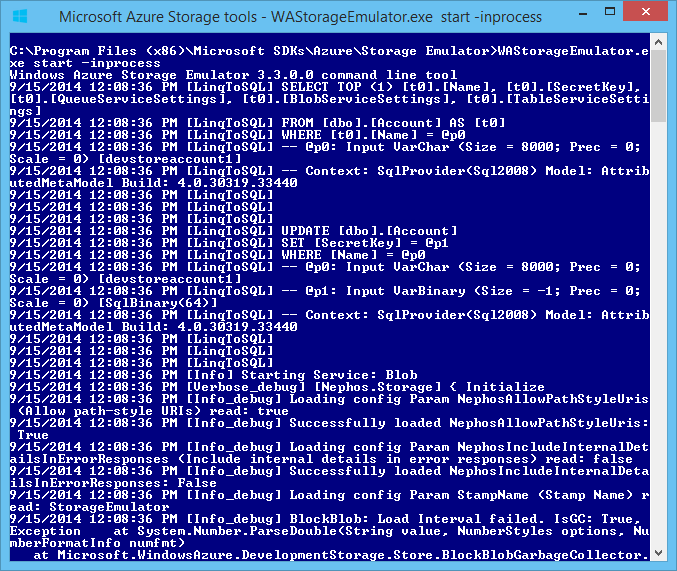
- #Microsoft azure storage emulator install
- #Microsoft azure storage emulator code
- #Microsoft azure storage emulator windows
Right-click the name Function1.cs in the Solution Explorer and rename it to LinkShortener.cs. In the next dialog, choose “Azure Functions v1”, select “Http Trigger”, pick “Storage Emulator” for the Storage Account, and set Access rights to “Anonymous.” Open Visual Studio 2017 and create a new “Azure Functions” project (the template will be under the “Cloud” category).
#Microsoft azure storage emulator code
You can download the source code for this project here.įeel free to jump ahead to follow the step-by-step instructions, or watch me follow through this blog post in a short video: Build and Test Locally with Function App Host and Azure Storage Emulator

You do not have to have an Azure account to run this on your machine.
#Microsoft azure storage emulator install
That will automatically install the Azure Storage Emulator you can use to program against tables, queues, blobs, and files on your local machine. The only prerequisite to build and run locally is Visual Studio 2017 15.5 or later, including the Azure Developer workload. Everything is handled by serverless Azure Functions. It uses Table Storage to map codes to URLs and a Queue to process redirect counts. This blog post walks through a simple application that creates a short code for a long URL to easily reference it. Hope this saves someone else a bit of time and trouble.Azure Storage is a quick and effortless way to store data for applications that has high availability, is secure, scales and is redundant. Moral of the story… tread lightly with WAStorageEmulator in Azure SDK 2.3… it seems slightly dodgy and still has a few rough spots. That’s 90 minutes of my life I’ll never have back. Success! This worked correctly and I finally had my emulator databases installed in my default SQL Server instance. (I threw in –forcecreate and –inprocess for good measure) WAStorageEmulator.exe init –server MyMachine –sqlinstance. Okay, so there’s an option to specify machine name, too… seems like it could figure out that I want the local machine by default, but whatever: This requires the current process to have been launched with elevated permissions. inprocess : Performs initialization in the current process instead of spawning a new process. forcecreate : Forces creation of the SQL database, even if it already exists. sqlinstance instanceName : Specifies the name of the SQL instance to be used. server serverName : Specifies the server hosting the SQL instance.

Performs one-time initialization to set up the emulator.
#Microsoft azure storage emulator windows
Windows Azure Storage Emulator 3.0.0.0 command line tool Stumped, I then took another look at the command line help for WAStorageEmulator: Taking a closer look using the totally awesome Process Monitor revealed no major problems with file or registry access.

Okay, no crash this time, but now the process just hangs and seemingly does nothing. WAStorageEmulator.exe init –sqlinstance (local) Debugging into Visual Studio showed the problem to be an unhandled ArgumentException… hmm, maybe it doesn’t like the period specifier for the local instance. This immediately resulted in a crash… not very user-friendly. No problem, I think to myself… I’ll just run the ‘init’ command for WAStorageEmulator.exe and point it toward my default SQL instance: WAStorageEmulator includes switches for initializing the storage database, starting and stopping the emulator, etc. Instead, the storage emulator functionality has been unified into a single command-line executable WAStorageEmulator.exe, found by default at c :Program Files (x86)Microsoft SDKsWindows AzureStorage Emulator. It turns out that as of version 2.3 DSInit is no longer included in the Azure SDK tooling (a fact that might have been useful to include in the release notes ). I prefer to host the databases for the storage emulator in my primary SQL Server instance instead of the default LocalDB, and had grown accustomed to running the command-line DSInit.exe tool to accomplish this.

Last night I worked my way through some dev tool updates and happened to install both SQL Server 2014 and the new Azure SDK 2.3.


 0 kommentar(er)
0 kommentar(er)
